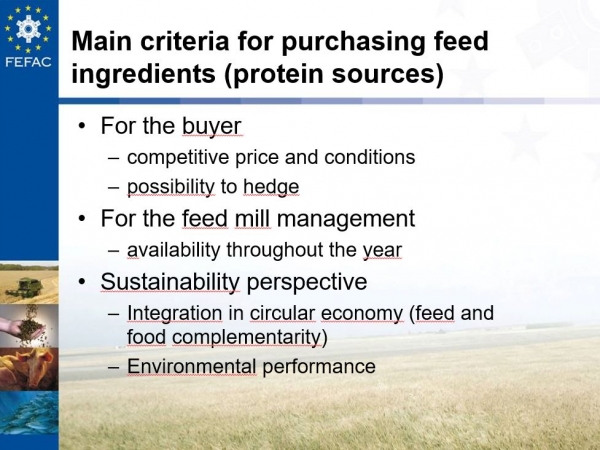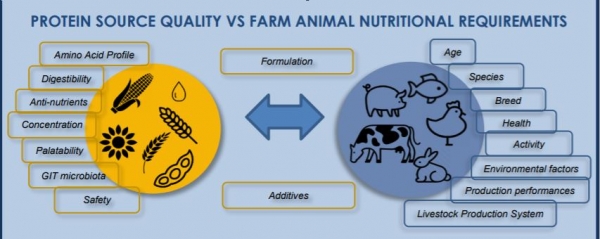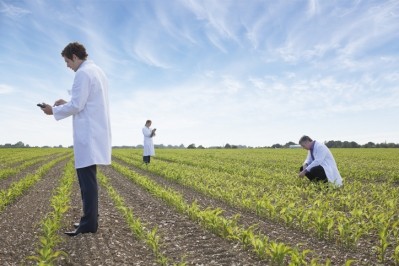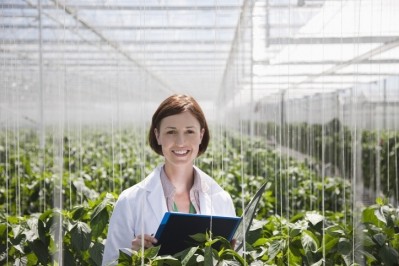Trade group advocates for feed perspective in EU protein plan
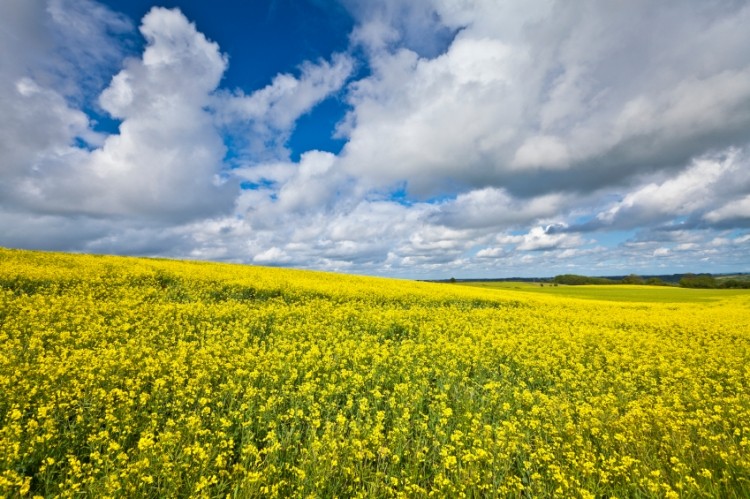
This week saw the feed industry representatives publish a factsheet outlining the EU feed industry’s needs in light of the development of that protein plan, which is being developed by the EU Commission’s Directorate-General for Agriculture and Rural Development (DG Agri).
It follows on from the original FEFAC position paper on this topic, published last march.
“We felt there should be more targeted communication from our side, [to draw down again] some of the key aspects that we feel are important for the protein discussion and make that a bit more visible, to get everyone up to date, given where we are in the cycle of development of the EU protein plan,” said Alexander Döring, secretary general, FEFAC.
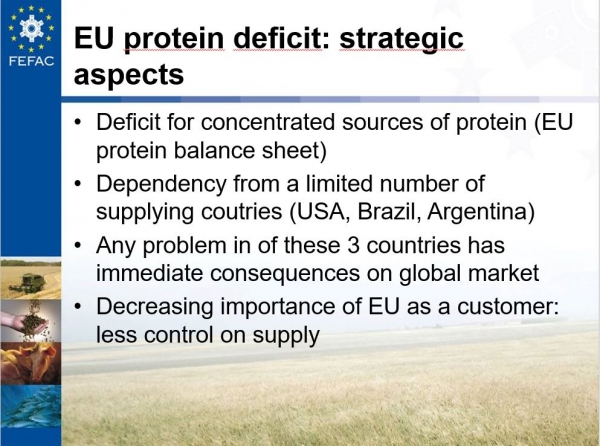
Döring said the FEFAC communication is also timely given that the Commission is reportedly about to receive a draft market report on the state of play and possible future measures in relation to the EU plant protein sector.
Three of the four thematic workshops the EU executive had said it would carry out with stakeholders to garner views on actions needed to support the EU plant protein sector have already taken place; those meetings were looking at issues around research and innovation, environmental benefits or supply chain challenges.
Moreover, a European Court of Justice (ECJ) ruling on whether so-called new plant breeding techniques (NPBTs) should be considered as part of GM legislation or not is set to be announced next Wednesday [July 25] – the FEFAC lead said that was another motivating factor for it to clarify livestock and feed industry needs when it comes to plant breeding research.
“We expect that [ECJ] ruling to get a lot of attention. The [DG Agri thematic] workshops had a lot of focus on plant breeding, for the right reasons. If you want to get anywhere closer to increasing the attractiveness of [EU cultivated] protein crops, oilseed crops, a lot of things have to happen on the plant breeding side. In order to really maximize opportunities, we need an interface between seed and feed research – that is something we are really missing today – what we are trying to acomplish is closer interaction between the animal nutrition research side and the plant breeding research side. To understand the dynamics of our industry, it would be very important for us that plant breeders know what it is that animal nutrition scientists are looking for.”
Protein quality, amino acid composition and profiling, reduction of anti-nutritional factors are just some of the elements that need to be considered when selecting plant proteins and oilseeds for use in feed formulations, he stressed.
“We are looking for ways to establish a more systematic, a broader based dialogue between animal nutrition and plant breeding scientists,” he continued.
Most plant research is food related, he said. Proteins, overall, from a plant breeders’ perspective have never been a target per se. Plant breeders tend to look at enhancing yields and disease resistance, which are typical agronomic targets, he added.
“Actually, for the past decade or so, the [spotlight] has been on biofuels, so it was about the energy content [of plants]. Protein was seen as a by-product, it was never a research target. There was no incentive for plant breeders to focus on protein.”
Economic incentives to grow protein crops
DG AGRI representatives outlined potential new economic incentives for EU protein crop cultivation at FEFAC's AGM in Lyon in June.
They said they were looking beyond existing policy instruments like voluntary coupled support [those linked farmers’ direct support to production of protein crops in order to stimulate the sector, and have been taken up by some EU member states].
Jens Schaps, director for agriculture markets at DG Agri, gave the keynote speech at the FEFAC event, and he explained then how the EU Protein Plan would attempt to provide a blueprint of options within the context of the CAP that could encourage home-grown plant proteins at the national level.
“He told us that, under the new delivery model, coupled payments would stay as an option but, on top of that, with the flexibility as far as Pillar 1 funding is concerned, the type of sectorial support measures used to strengthen fruit, vegetable and wine producer groups can definitely be applied to other sectors, including proteins. So they are trying to enlarge the toolbox, to enhance plant protein production level at Member State level.
“But then of course the ball is in the camp of the Member States and the reference here is to future national strategic plans.”
And while several EU governments signed the EU Soy Declaration last year, how motivated are policymakers to back protein production domestically?
“We are keen to understand what politicians really mean when they talk about [their concern] over the [EU] protein deficit. If these countries are really serious about that, let’s see if they then put their money where their mouth is,” he said.
Environmental considerations
FEFAC’s protein factsheet highlighted the need to minimize the environmental impacts of growing feed protein crops. How sustainable then is it to cultivate certain plant proteins in Europe as opposed to near the Equator, for example?
“There are two aspects to this. There is need for arbitration and there is a need to do an [comprehensive] life-cycle assessment (LCA). The acreage for soy can definitely grow in Europe – there is no agronomic reasons why it can’t. In markets like Romania, Italy and Hungary, there is still clearly potential for increasing acreage for soy in particular.”
Under the new CAP model, there would seem to be more of an incentive for farmers to go for greater crop diversification or crop rotation and that is where protein crops may secure greater importance in terms of farmers’ planting intentions, said Döring.
“Of course, there is also the land use impact. If you increase the acreage of protein crops you decrease the acreage of other crops, and that raises another issue - the biggest problem for protein crops really is the yield differential with our cereals, which makes them economically less attractive. But also from an LCA perspective, by displacing other crops, in terms of the overall land use impact, is there really a benefit? Clearly, this needs further arbitration.”
However, some countries could really benefit from growing more protein crops, including Italy, which has a problem with ongoing mycotoxin contamination of its maize crops, he said.
Nutritional advances
There have been positive outcomes, though, in relation to enhancing the nutritional content of oilseed crops as a result of R&D work in the Black Sea region, for example, he stressed.
“Bulgaria has developed patented technology to remove fiber from sunflower, meaning they can actually push the protein content in sunflower to levels that are absolutely comparable to the levels in soybean meal.”
And advances in rapeseed meal processing technology have helped in terms of addressing the anti-nutritional factors linked to that co-product. Of course, the inherent non-digestible phosphate levels in rapeseed meal still limits its use in markets with strict legislation in that regard.
“There is no one-size-fits-all solution.”
Complex issue
Döring said, ultimately, FEFAC wants to help policymakers understand the complexity but also the need for a comprehensive study of the protein issue:
“The Commission has been using, so far, just the term ‘plan’, it has been shying away from using [the term] ‘strategy’. We believe that Europe would do well to have a real strategy about its protein supplies, where they should come from by 2030 and beyond. Protein is a decisive factor in terms of both the competitiveness and the ecological footprint of the EU livestock production sector. It is a strategic objective from our perspective.
“We would rather like to see politicians raise the profile and the importance of this whole topic. But if you go back to the EU soy declaration, the signatories are just too short-sighted. They are mainly looking at niche opportunities like non-GM, and food use of proteins. We have nothing against niches but they are not getting the big picture. We fear a little bit that, with the unbalanced position in the soy strategy, they are not fully understanding or not fully engaging in discussing the key foundation stones to ensure the European livestock economy can count on a broad supply of protein, both from home-grown and imported sources, for the next decade or so.”
He also warned of the very real risk from current trade disputes for agri-commodity supply and price fluctuations.
“We must face the probability of the EU-US tariff escalation continuing. That would certainly concentrate minds [on the issue of future protein supply]. We are only possibly one step away from EU retaliatory measures, such as imposing punitive tariffs on US soy. Now that would completely change the picture. At the moment, we are benefiting, we have the windfall from the China tariffs but that may go in completely the wrong direction if the US moves ahead with its threats to impose punitive tariffs on EU cars or car parts, which would definitely trigger a robust response from the EU. We might then be in the firing line.”
